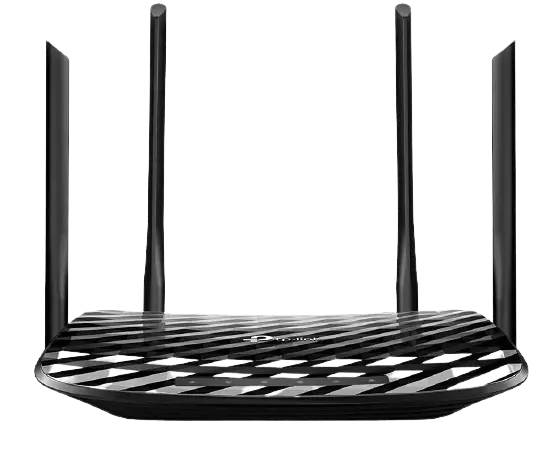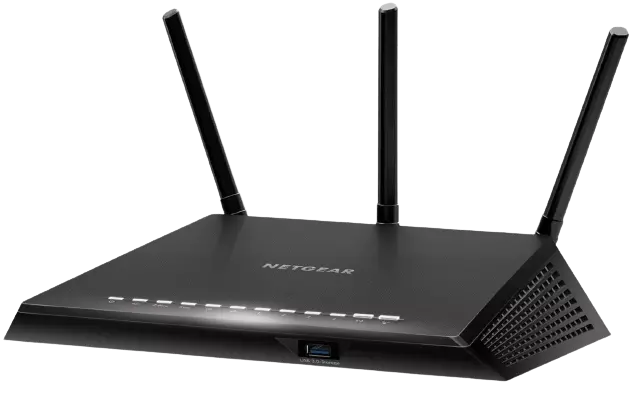TP-LINK AC1200 vs AC1750 Ultimate Comparison
Networking reliability is crucial when you’re playing online games or watching movies online. This is where the effect of an excellent router is always felt. You’ll never be thrown out of a game due to network troubles if you have a router with high-speed internet and excellent stability. Depending on your demands, you can obtain enough bandwidth to connect several devices or stream movies in 4K resolution.
The TP-Link AC1200 is a low-cost dual-band router with certain capabilities seen on higher-priced devices, but its performance lags behind the competition somewhat.
The AC1750 from TP-Link is a low-cost router that functions like a more costly one. It comes with four Gigabit LAN connections and two USB 2.0 connectors, which is a fantastic feature set.
This post will explain the differences between AC1200 and AC1750 and much more to potential purchasers. This will give you peace of mind while purchasing your new router.
AC1200 VS AC1750
Our daily lives have been made so much easier thanks to the Internet. Everything is just a click away, including instructions, recipes, music, and email. The Internet is evolving at a breakneck speed. There was a time when 500 Kbps was considered a fast internet connection. Fast forward to the twenty-first century, and we now have download rates of over one gigabit per second. All of this is possible because of iterations.
For a long time, people relied on actual cables, until Wi-Fi was created. This allowed individuals to connect to the internet without the use of physical wires. Although cables were required to link the router to the servers, your device has the ability to access the internet via Wi-Fi.
A Wi-Fi network is made up of two fundamental components. A Wi-Fi client and a Wi-Fi access point are both available. You’re all familiar with the modem/router, which is the equipment that links you to the internet. A modem/router is in charge of establishing a connection between your computer and the internet. All of your gadgets get Wi-Fi signals from it. Routers come in a variety of shapes and sizes, each with its own set of features.It’s critical to understand the many sorts of routers, as well as the distinctions in their specs and functions. When searching for routers, you may have come across terms like AC1200, AC1750, AC1900, and AC3200. These numbers make little sense to a non-technical person, yet they reflect some of the router’s most critical tasks.
What does AC stand for?
Let’s start with the fundamentals. You’ve probably seen the number 802.11 before, but do you know what it stands for? The IEEE 802.11 standard was created with the goal of implementing wireless local area network communication. It is a standard that everyone adheres to.
This protocol has been stressed over time as speeds and connection dependability have improved. The initial protocol was 802.11b, which was followed by 802.11a, 802.11g, 802.11n, and ultimately 802.11ac. This is the most recent Wi-Fi protocol version.This device is dual-band, meaning it can work on both the 5 GHz and 2.4 GHz radio bands. Beamforming, which sends signals directly to the client’s device, was introduced with the new standard.
Wi-Fi 5 is another name for 802.11.ac. Despite the fact that the Wi-Fi alliance altered the naming scheme, some individuals still refer to it as 802.11.ac.The AC in ACXXXX indicates that the router is compatible with the 802.11ac standard. Almost all new routers support 802.11ac, so make sure to double-check. Let’s talk about what the numbers following AC in ACXXXX signify now that that’s obvious.
What Does AC on Routers Mean?
Routers having the AC designation on their names are very popular these days. Apart from a newer networking standard, the AC brand meant nothing. A router with the AC standard supports the newest 802.11ac standard, which provides a fast 5GHz Wi-Fi connection. The number following the AC represents the router’s theoretical maximum bandwidth. That implies that an AC1200 router may potentially handle internet speeds of up to 1200Mbps.
Wireless-AC offers a higher bandwidth of 80MHz, with a 160MHz version available. In comparison, the earlier Wireless-N standard only allows frequencies between 20 and 30 MHz. These bandwidths may be compared to a grocery shop with various numbers of counters, with 20MHz having only two counters and 80MHz having eight. The more counters a grocery store has, the more customers it can serve at once, resulting in a faster and more efficient shopping experience.
The Wireless-AC standard operates on the 5GHz band, whereas the Wireless-N and Wireless-G standards operate on the 2.4GHz range. Both have advantages and disadvantages; the 5GHz band is quicker than the 2.4GHz band, but it covers a smaller region. While 2.4GHz is slower than 5GHz, it can cover a greater area but has interference issues. Everything wireless, from a cordless phone to a Bluetooth headset, might interfere with your 2.4GHz router’s signal. Microwave ovens run at 2.4GHz, which can result in electromagnetic or radio-frequency (RF) interference.
In ACXXXX, what does XXXX stand for?
Now that you know what AC stands for, let’s look at the digits that come after it. These figures represent the total amount of bandwidth that the router is capable of providing. Don’t mistake the router’s capable bandwidth speed with the ISP’s bandwidth speed.Your ISP’s speed and your own are two different things. It might range from 1, 2, 4, 10, 50, or even 100 megabits per second. The numbers after AC indicate the maximum speed your router can provide. This is a function of your router and has nothing to do with the speed supplied by your ISP.
In terms of speed, routers differ in the following ways:
AC1200 \\AC1750 \\AC1900 \\AC2200 \\AC3000
The figures represent the whole amount of maximum speed, as previously mentioned. The speed provided by the 5 GHz and 2.4 GHz bands is added together. The routers are all dual-band or triple-band routers. A 2.4 GHz and 5 GHz band, or a single 2.4 GHz band with two 5 GHz bands, can be found on routers.
AC1200 or AC1750?
The fundamental question now arises. Let’s look at the differences between the AC1200 and the AC1750 before making a decision.

As the name implies, AC1200 may deliver a total theoretical speed of 1200 Mbps. On the 2.4 GHz band, it can deliver 300 Mbps and on the 5 GHz band, it can deliver 867 Mbps. The AC1750, on the other hand, has a total maximum speed of 1750 Mbps. On the 2.4 GHz band, it can offer 450 Mbps, and on the 5 GHz band, it can deliver 1300 Mbps.These routers with AC1200 or AC1750 can help you if your ISP rates are more than 300 Mbps.
Yes, we’ve never tested an AC1200, however, we believe the Netgear AC1200 R6120 is the finest in this category. The Netgear AC1200, like all Wireless-ACs, has dual-band Wi-Fi, with 2.4GHz reaching up to 300Mbps and 5GHz reaching up to 900Mbps. It has the capacity to connect up to 20 devices and can cover an area of up to 1200 square feet.
The Netgear R6700 is most likely one of the greatest Netgear devices we’ve ever evaluated. Here’s a detailed evaluation of the Netgear R6700 Nighthawk AC 1750. It is an AC1750 dual-band smart Wi-Fi router. That implies it offers a total throughput of up to 1750Mbps, including 450Mbps for 2.4GHz and 1300Mbps for the 5GHz band. It has a 1GHz dual-core processor, 256MB of RAM, and 128MB of flash memory. It’s well-known for its significant usage of a 12-panel LED front panel. It also has a USB 3.0 port and five Gigabit Ethernet connections.If you have a decent-sized house with an internet speed subscription of no more than 300Mbps for 2.4GHz and 900Mbps for 5GHz, the Netgear AC1200 is an obvious choice. It has the capacity to link up to 20 devices and can house up to 1200 square feet. If you want a router that can keep up with the times, the considerably faster Netgear AC1750 is the way to go. Most typical internet subscriptions nowadays require a throughput of 450Mbps on 2.4GHz Wi-Fi and 1300Mbps on 5GHz Wi-Fi.
We also think Netgear AC1750 Routers are among the best Netgear routers available. It’s reasonably priced, yet it’s as fast and reliable as other Netgear devices, even the higher-end ones.

While the Netgear AC1200 Routers are adequate for the most part, the Netgear AC1750 Routers check the majority of the boxes in terms of speed, dependability, and cost-effectiveness.
What are some of the most popular AC WiFi router brands?
Almost all WiFi router manufacturers have now adopted the AC WiFi standard. The following are the most common router manufacturers/brands that support the AC specification:
- Netgear
- TP Link
- ASUS
- Linksys
- Motorola
- D-Link
- Google WiFi
- Eero
- Tenda
- Arris
- Ubiquity
Conclusion – TP-LINK AC1200 vs AC1750
As the name implies, AC1200 may deliver a total theoretical speed of 1200 Mbps. On the 2.4 GHz band, it can deliver 300 Mbps, and on the 5 GHz band, it can deliver 867 Mbps. The AC1750, on the other hand, has a total maximum speed of 1750 Mbps. On the 2.4 GHz band, it can give 450 Mbps, and on the 5 GHz band, it can deliver 1300 Mbps.
The TP-Link AC1200 is a good option if you need a cheap Wi-Fi router for your dorm room, apartment, or small house. Although you won’t receive blistering 2.4GHz throughput, its decent 5GHz performance should be enough to handle your video-streaming and online gaming needs. The online interface has a lot of administrative features, such as parental controls and QoS settings. However, there is no virus protection.
The TP-Link AC1750 Wireless Dual Band Gigabit Router (V2) may be under $100, but its performance and feature set belie its price. It outperformed comparable priced cheap versions in terms of 2.4GHz and 5GHz throughput. It has a lot of administration options and a lot of I/O ports. However, the TP-Link AC1750 user interface should be improved, and file-transfer performance might be improved. It is, nevertheless, the fastest dual-band router in its category.
The only big difference between the AC1200 and AC1750 is their speed. Now it’s up to the buyer to decide which option is better for them. The AC1750 is strongly recommended for future-proofing because it delivers faster speeds on both the 2.4 and 5 GHz bands.





